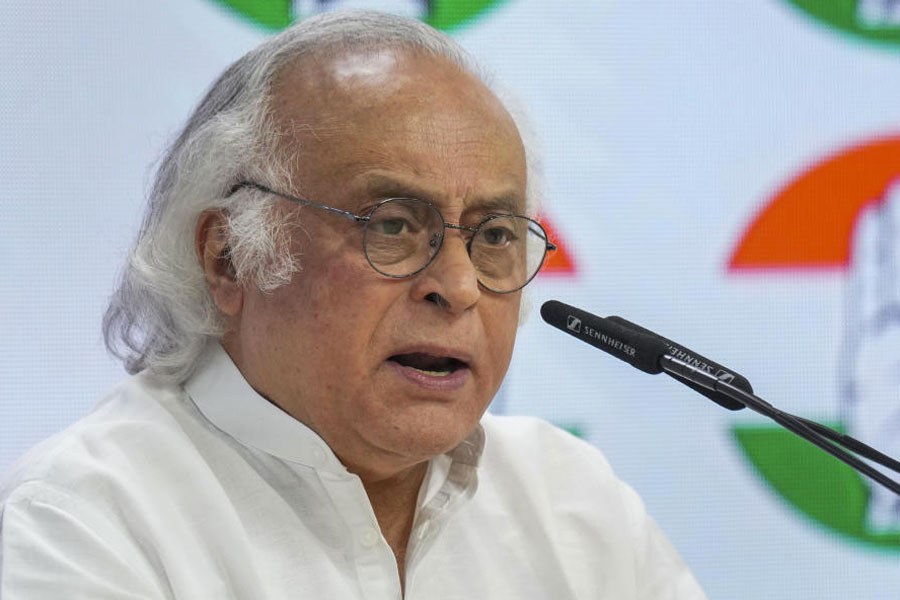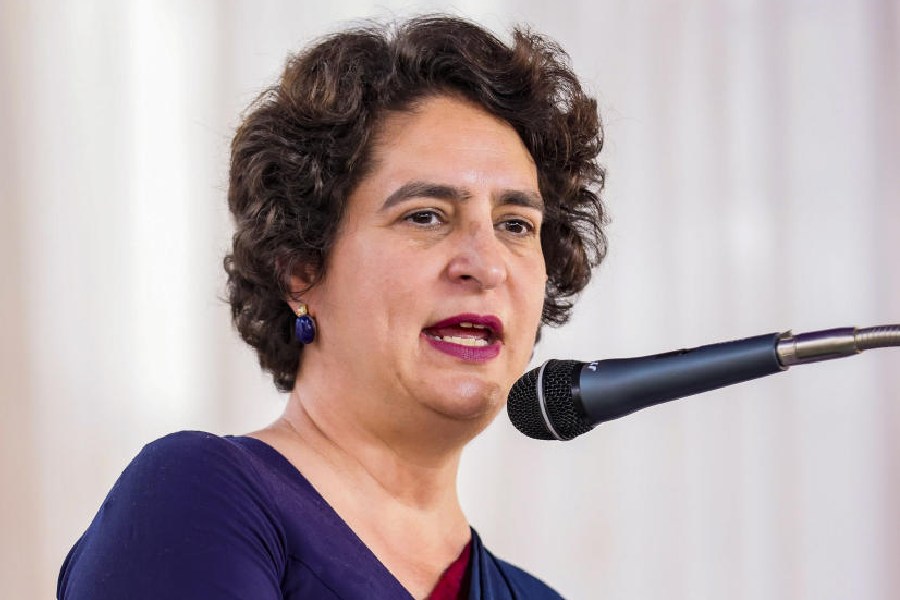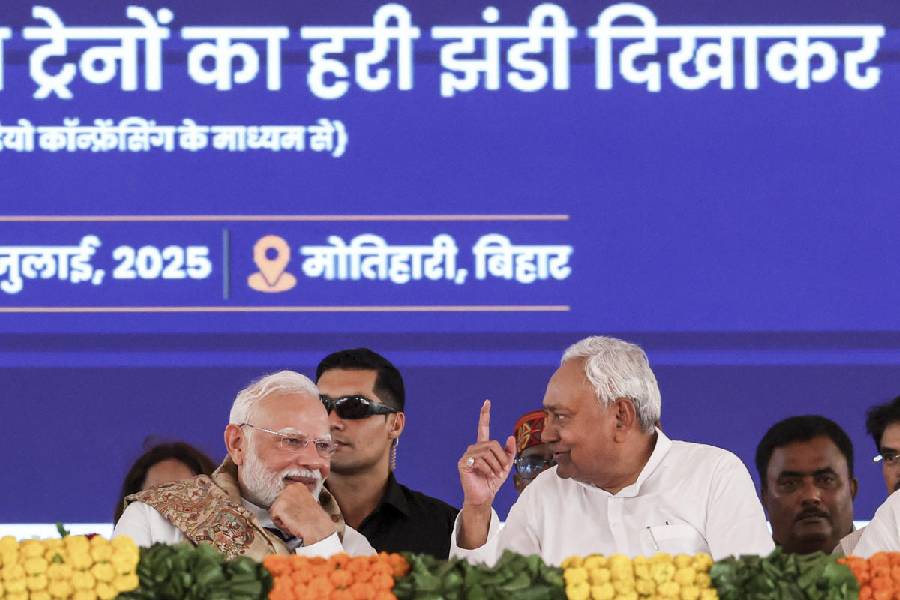 |
| Pradeep Jain (standing) and Sudhir Hasija are ringing in high-decibel growth at Karbonn Mobiles Pix: Jagan Negi |
 |
Would you like a mobile phone that acts as a universal remote for your television? Or perhaps you’d want one that can detect fake currency? Or one that also works on a battery?
On the other hand, now that you’ve tried a dual SIM mobile (where you can have one SIM or phone number for incoming calls and use the other for cheap outgoing calls), perhaps you’re ready to try a triple SIM one. Or how about a convergence mobile-cum-tablet device instead?
The Indian mobile handset market is abuzz with these and more innovative offerings. And ringing in these products are a host of Indian mobile handset makers from Micromax Informatics — it’s now the third largest player in the mobile phone market — Karbonn and Spice to Lava, Intex and Zen.
The players have caught the pulse of the Indian mobile user by catering to indigenous needs like long battery life. Moreover, they’ve won over the price-sensitive Indian customer on price too — these handsets can cost one-tenth the price of multinational brands.
Not surprisingly, they’re giving strong competition to the likes of Nokia, Samsung and LG. “To be honest, we didn’t expect to achieve this in such short time,” admits Vikas Jain, business director, Micromax.
If you live in a big metro, you probably weren’t aware of brands like Micromax and Karbonn a year ago. But consider this. In 2008-09, the Indian companies accounted for barely 4 per cent of the country’s total handset sales (by revenue), according to a Voice&Data survey. But by 2009-10, their share had jumped to 14 per cent.
 |
| Lava International’s S. N. Rai is keen to meet local consumer needs with products like the new B5 Alpha business phone Pix: Jagan Negi |
 |
Moreover, according to telecoms research firm IDC India, the number of Indian players has grown from five in March 2008 to 28 by December 2009. It helped that the government banned cheap grey market phones, providing an opportunity to local players.
The players made their first call in under-served rural and semi-urban markets. And now, they’re focusing on urban centres too. They’ve ratcheted up the volume too by signing celebrity brand ambassadors and sponsoring big-ticket events. There’s Twinkle Khanna endorsing the Swarovski-studded Micromax Bling and the India-Sri Lanka Micromax Series too. Virendra Sehwag and Gautam Gambhir are ambassadors for Karbonn Mobiles, the IPL’s ‘Official Partner Mobile Phone’. And Amitabh Bachchan is endorsing Zen Mobile.
But many of the Indian handset makers are still perceived to be only selling cheap Chinese handsets under their own brand. And quality is an issue too. Indeed market leader Nokia’s V. Ramnath, director, operator channel, says: “This is a rapid innovation, rapid failure industry. Devices need to be backed by several things like brand, support, reach and services.”
Out of the box
It all began with smart features at an affordable price. Take Micromax. Till 2008, its four partners — Jain, Rahul Sharma, Sumeet Arora and Rajesh Agarwal — were making fixed wireless equipment for PCOs in rural areas. They came together in 1999 when Jain, Arora and Sharma joined Agarwal, who was distributing computer hardware. They began by designing corporate websites. After the dotcom bust, they first distributed equipment for Nokia and later, made fixed wireless equipment.
 |
 |
| Kunal Ahooja wants Spice Mobiles to capture the smartphone market |
“The company’s ethos has always been in technology. This helped us when we got into mobiles,” says Jain. That was in 2007. There’s the tale of how Sharma saw an Airtel PCO in West Bengal being powered by a truck battery.
“India is power-deficient and a phone with extended battery life was a simple requirement. But no one thought of it,” says Jain. Till Micromax launched the X1i with a standby battery time of 30 days for a super-cheap Rs 2,249. “It struck a chord from the beginning. Even today, we sell over 1 lakh units,” says Jain.
Then, Micromax pushed dual SIM phones. Or till last year, Qwerty phones were positioned as business phones. But Micromax realised SMS was the biggest value-added service, and launched the Q1 with chat. “We were the first to position Qwerty phones as chat phones,” says Jain. More recently, there’s the X235 universal remote phone, and the G4 Gamolution, which doubles as a gaming device (like the Wii). Says Jain: “We’ve always tried to bring something innovative so we don’t get into the price game.”
So how about a mobile that’s also a mosquito repellent or one that’s a computer mouse? Yes, Micromax will launch these products soon — it will introduce 12 models within 18 months. And Jain wants to double its current sales of one million handsets a month — the total market is 12 million sets a month — by March 2011.
Roaming out
 |
 |
| Zen Mobile’s Deepesh Gupta has roped in Amitabh Bachchan as brand ambassador Pix: Jagan Negi |
The Indian players have also succeeded by wooing distributors with higher margins and penetrating rural and semi-urban areas. Pradeep Jain and Sudhir Hasija, who co-founded Karbonn Mobiles in June 2009, know this too well. For they both own companies that have distributed brands like Nokia and Samsung over the last 15 years.
Says Pradeep Jain, managing director, Karbonn Mobiles: “Internationally, local brands have done well. That’s why we decided to launch our own brand.”
Karbonn also saw that multinationals were offering voice-oriented mobiles in small towns. “We decided to offer full multimedia. The mobile experience goes beyond voice today,” says Sashin Devsare, CEO, Karbonn Mobiles. So its phones had FM and AM radio and video players. “People want feature phones but in their price range,” says Pradeep Jain, who expects to double sales to one million handsets a month in 2010-11.
Karbonn’s 24 models are priced from Rs 1,500 to Rs 6,000. For instance, its recently launched K25, a dual SIM Qwerty multimedia phone with optical trackpad, sells for Rs 4,400.
Early caller
Unlike Karbonn and Micromax, B.K. Modi’s Spice Mobiles saw the opportunity back in 2005. Says Kunal Ahooja, CEO, Spice Mobiles: “When Mr Modi called me to set up Spice Mobiles, I felt he was being too adventurous in establishing an Indian brand,” recalls Ahooja.
But he persisted. Spice began with entry-level phones in small towns before entering the metros. From its first S500 handset, it customised for local conditions by enhancing the ringtone and speaker volume. “We also embedded Bollywood songs, so we used content as a differentiator then,” says Ahooja.
 |
 |
| Intex Technologies’ Ramesh Vaswani will continue to woo rural and semi-urban markets with “technology at reasonable prices” |
There have been a slew of mobiles ranging from Rs 1,500 to Rs 18,000 ever since. Spice was the first to launch a dual SIM phone in 2007. Or take its popular M-4580, which can detect fake currency.
“We’ve got a strong track record,” says Ahooja, who’s focusing on high-end mobiles. There’s the recent S-1200 with its 12.2MP camera. Coming up are high-to-entry-level Android phones. “Smartphone sales are increasing globally. We’ll see this happening here too. We want to leverage this,” he says.
Feature feast
Indeed, the Indian handset market is evolving rapidly. Says Naveen Mishra, lead telecoms analyst, IDC India: “The mobile has morphed to become no less than the Swiss knife of personal communication devices.” After all, it doubles as a wristwatch, radio and more.
Consumers are also adopting new features quickly. According to IDC India, dual and triple SIM phones accounted for 2.7 per cent of total handset sales in 2009. This jumped to 34.66 per cent by March 2010. Similarly, the share of Qwerty handsets has grown from 0.24 per cent to 3.66 per cent and touchscreen phones from 1.92 per cent to 5.03 per cent in this period. Rural customers aren’t lagging behind either. Jain says Micromax sells 60 per cent of its Qwerty phones in rural areas.
Or take Intex Technologies. When it launched its Rs 3,650 video chat phone IN-4470, it was targeting B and C towns. “A villager can now see his son in the city. Eighty per cent of its sales are from these towns,” says Ramesh Vaswani, executive vice-chairman, Intex Technologies.
 |
| The OlivePad is a “super-smartphone and more” says Olive Telecom’s Arun Khanna (centre) |
The 14-year-old Intex is a leading IT player and makes PCs and peripherals like speakers. It got into mobile handsets in 2008. “The mobile is a convergence product today,” says Vaswani. So Intex has leveraged its IT strengths by focusing on features like high-quality FM.
“Like in IT, we’ve offered technology at reasonable prices,” says Vaswani. So its IN2020 Qwerty costs just Rs 2,200. Coming up are Android phones. Vaswani’s largely focusing on small towns and tehsils for growth.
Refresh appeal
The players are always innovating. Take 14-month-old Lava International’s new B5 Alpha. It’s a business phone but instead of a Qwerty keypad, the keys are in alphabetical order. “Most people in small towns have never used a computer. So we re-designed the keypad. You have to think like an Indian to succeed,” says co-founder and director S.N. Rai.
Actually, when S. N. Rai quit LG Electronics to found Lava along with Vishal Sehgal, Sunil Bhalla and Hari Om Rai, they weren’t looking at mobile handsets. The four became friends at a Noida club. Bhalla had an inverter company. Sehgal was COO of Airtel, and Hari Om Rai’s Pacetel was into telecom equipment. “We wanted to create something of our own,” says Rai.
Selling mobiles in small-town India was an obvious opportunity. “Our vision is to work with technology that empowers people,” says Rai. Predictably, their first phone, the KKT11 offered long battery and loud sound. Since then, they’ve expanded to lifestyle phones like the A9. Coming up are six new models.
Riding the wave
 |
 |
| Micromax has always tried to bring something innovative to the table, says its co-founder Vikas Jain |
Meanwhile, 26-year-old Deepesh Gupta, managing director, Zen Mobile, is riding the momentum too. His father has a mobile distribution firm, and he too ran a mobile accessories firm before founding Zen last September.
Gupta is launching two handsets a month today. From his first Zen M11 phone, he’s focused on multimedia because he feels users are “entertainment hungry”. Take the recent Z82, a Rs 4,600 Qwerty phone with analog TV. “I knew analog TV would hit the spot because it’s used by the masses,” he says.
The seven-month-old Olive Telecom’s chairman Arun Khanna has bigger ambitions. He’s just launched the OlivePad, a 3G tablet like the Apple iPad but which is also a smartphone.
“The OlivePad is a super-smart phone. It has video calling, it’s a TV, GPS, e-book reader and more,” says Khanna. The Rs 22,000-Rs 25,000 device should hit stores this month.
Khanna believes Olive is unlike other handset company. “Olive is creating a differentiated position by developing niche devices,” states Khanna, who moved from healthcare to telecoms when he formed a joint-venture with Haier five years ago.
Olive’s already launched 18 handsets though, including the FrvrOn, which has a AAA-battery slot. You can expect 20 more models this year. “The future belongs to smartphones and that’s where we’ll be,” says Khanna.
Tough calls ahead
All this activity means that the Indian handset market has got crowded, especially at the entry- and mid-level. But Indian players still have to fight doubts about their quality and staying power.
And now that dual SIM, Qwerty et al have become ubiquitous, what next? The players are confident there’s growth ahead. Micromax’s Jain believes there’s more scope for innovation. And Intex’s Vaswani says: “There’s room for many brands. But it will depend on quality, pricing and after-sales.”
Market leader Nokia’s moving quickly to defend its turf too. After launching competitive entry-level handsets, it’s bringing other innovations like a Bicycle Charger Kit so you can pedal and charge your phone.
The Indian players are also betting on 3G and convergence. Some like Micromax, Lava and Olive are also investing in software. Besides, they are all ramping up distribution and service centres too. Clearly, the market’s not going to stop ringing for a long time yet.










